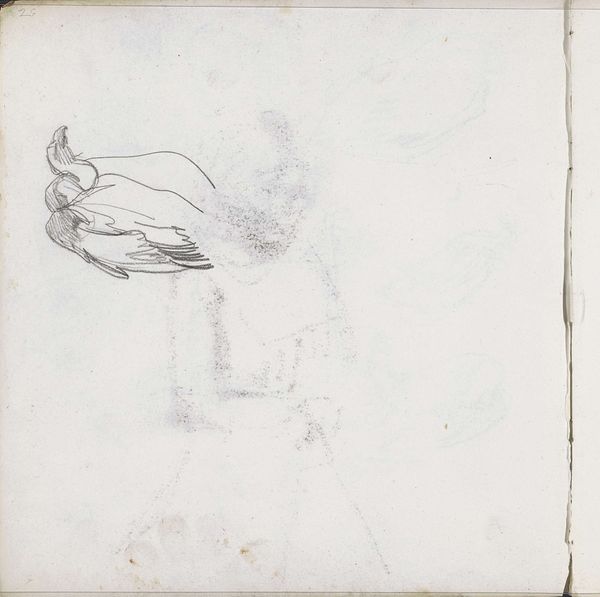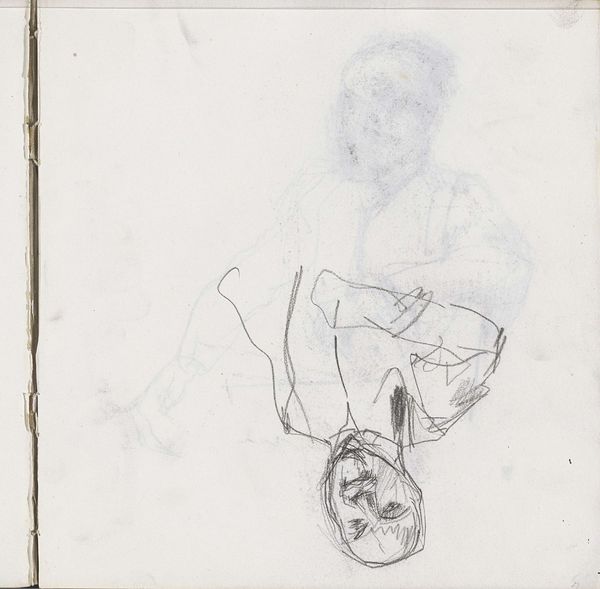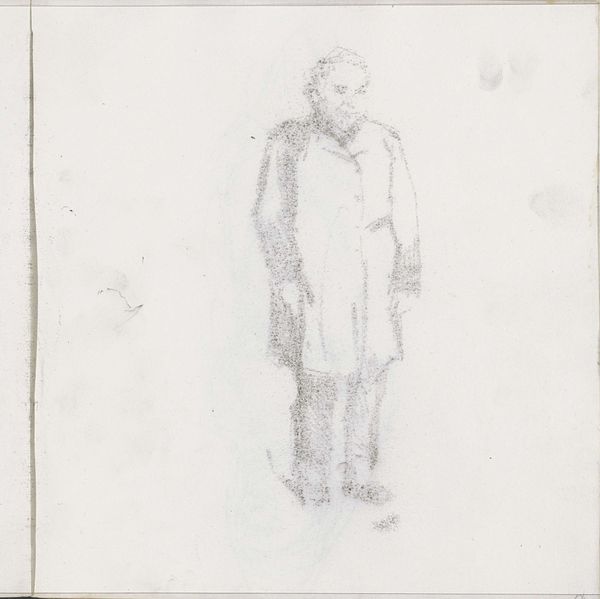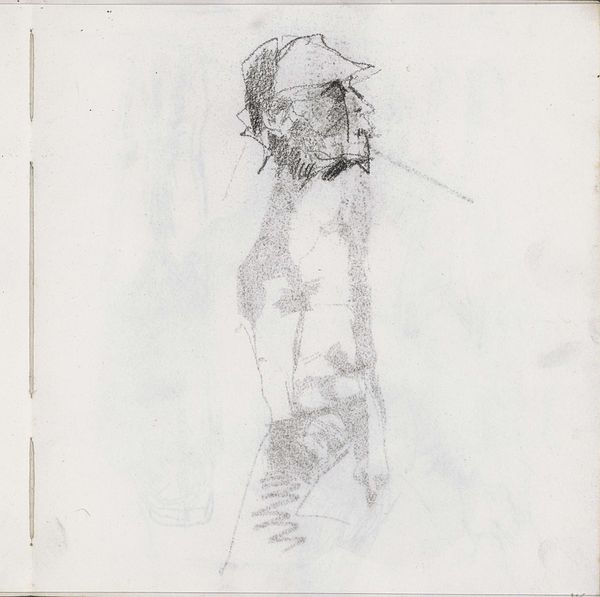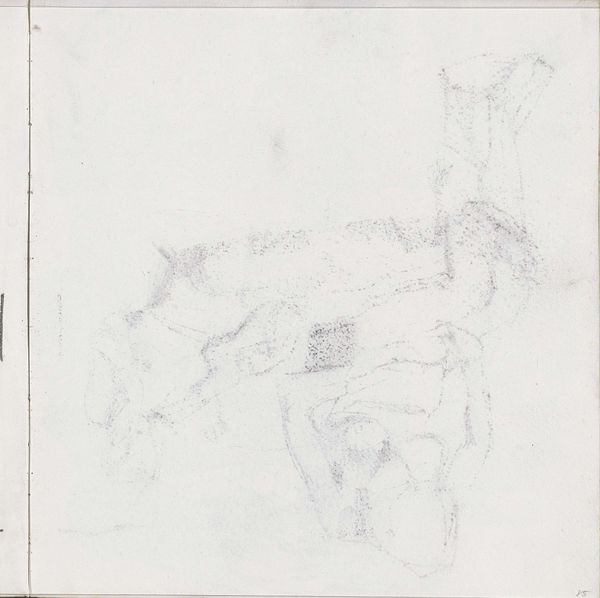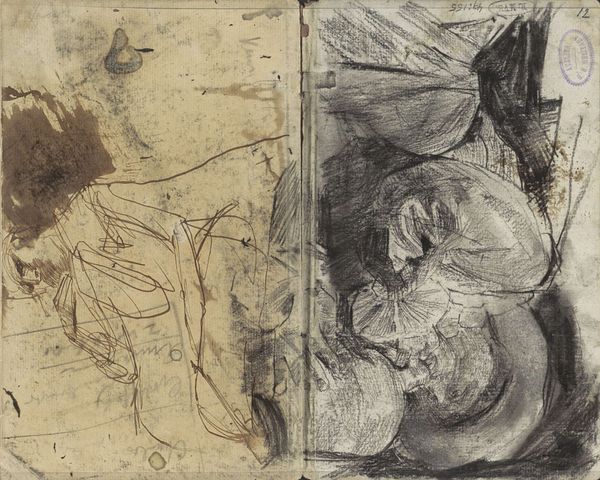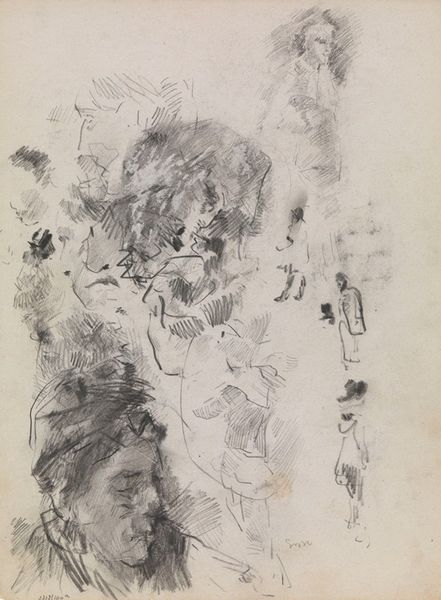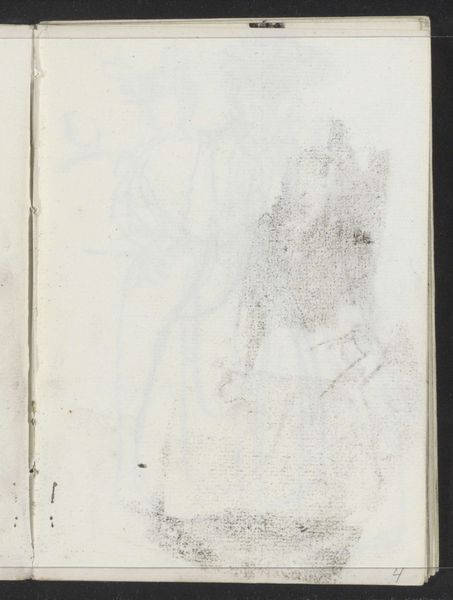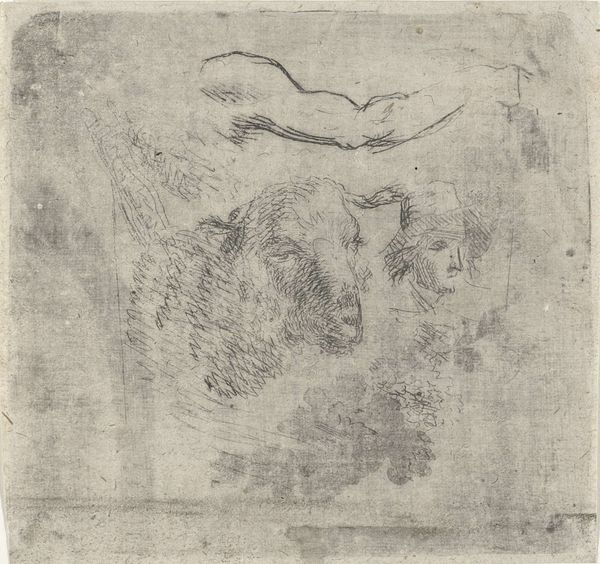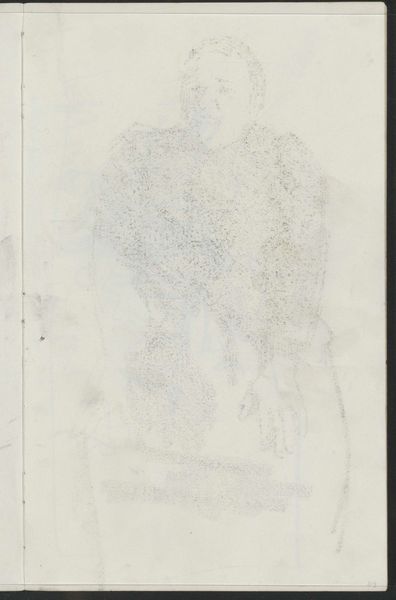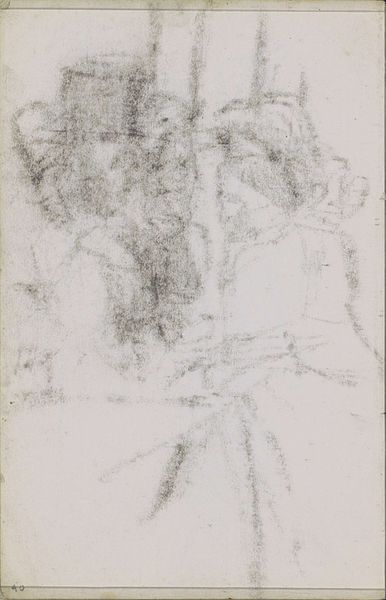
drawing, paper, pencil
#
portrait
#
drawing
#
pencil sketch
#
figuration
#
paper
#
pencil
#
watercolor
Copyright: Rijks Museum: Open Domain
Curator: Welcome. Today, we’re observing Isaac Israels' “Abklatsch van een krijttekening," a drawing rendered in pencil and watercolor on paper sometime between 1875 and 1934. It currently resides in the Rijksmuseum. Editor: My first impression is one of transience. The figures appear ghost-like, ephemeral, almost on the verge of disappearing from the page. Curator: Yes, there is an ethereality to it. Note the subtle tonal gradations achieved through the pencil work, combined with what seems like accidental or purposeful smudging. The structure is more implied than explicitly stated; we must work to discern the figures. Editor: And that very act of discernment engages me. The ambiguity prompts me to consider who these figures might be. Are they from the margins, the unseen populations Israels often depicted? Is this absence and vague presentation a reflection on the societal invisibility of those individuals? Curator: A valid reading. We could also examine the compositional elements more abstractly. Consider the placement of the figures – seemingly cropped, bleeding off the edge of the paper, disrupting any conventional sense of portraiture. The positive and negative space interplay is dynamic. Editor: It feels deeply connected to the era's socio-political shifts. There is something radical here, an act of deconstruction of bourgeois portraiture norms through depicting anonymous individuals and using this fragmented and almost deteriorated style. Is this a subversive commentary on representation itself? Curator: Perhaps. Or, viewed through a purely formal lens, it may be simply an exploration of form and light – an exercise in capturing fleeting impressions with minimal means. Look at the textured layering, how some parts are darker, giving the effect of a relief. Editor: I see a direct reaction to social upheaval, this piece acts like a visual representation of precarity during industrial capitalism's early throes. To divorce its aesthetic qualities from those societal conditions feels insufficient. Curator: Such different vantage points from which to see Israels' process. I notice how your interpretation allows for a narrative reading whereas my appreciation comes from purely noticing Israels’ execution of form and technique. Editor: Exactly. Approaching with socio-historical questions in mind expands the work’s richness immeasurably, for me. Thank you for pointing to the interplay between positive and negative space here - in thinking about that in conjunction with the way the drawing uses shadow, I can start to reconcile our approaches, perhaps.
Comments
No comments
Be the first to comment and join the conversation on the ultimate creative platform.

